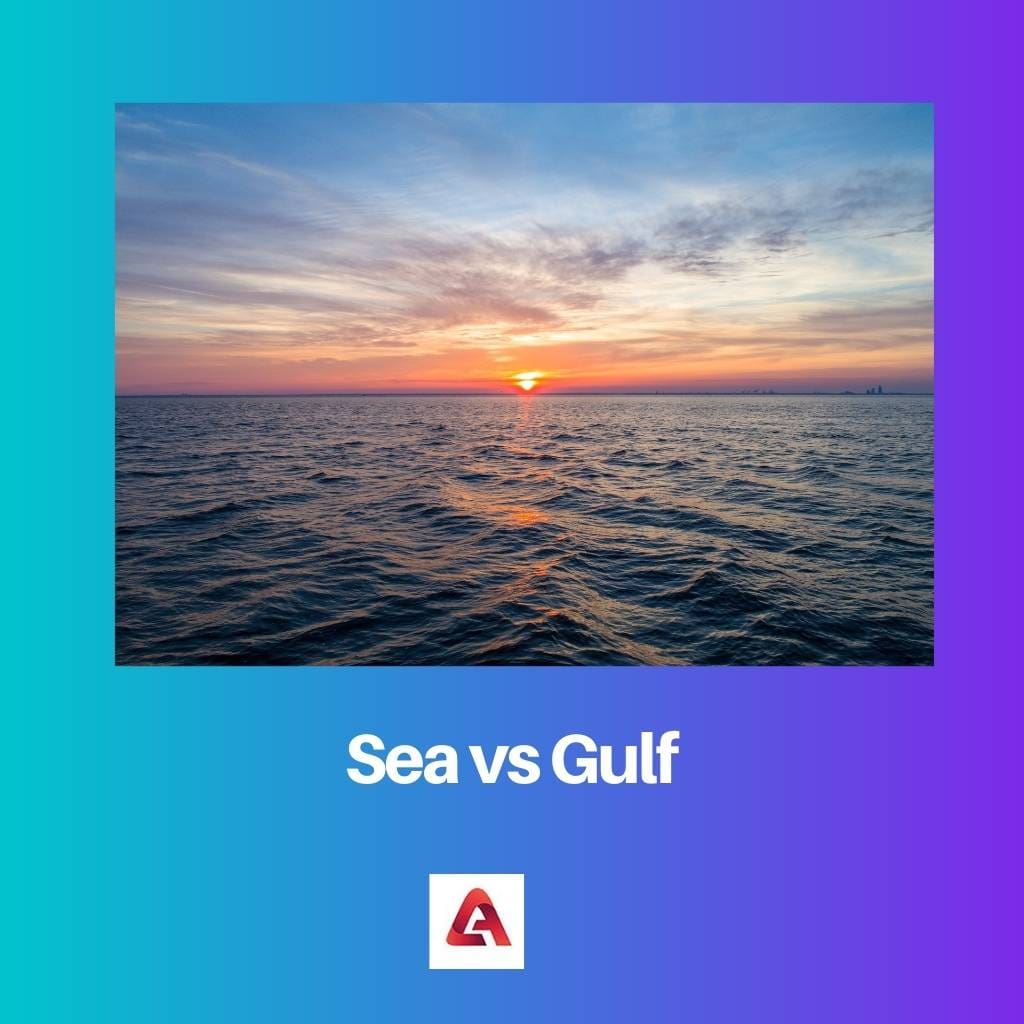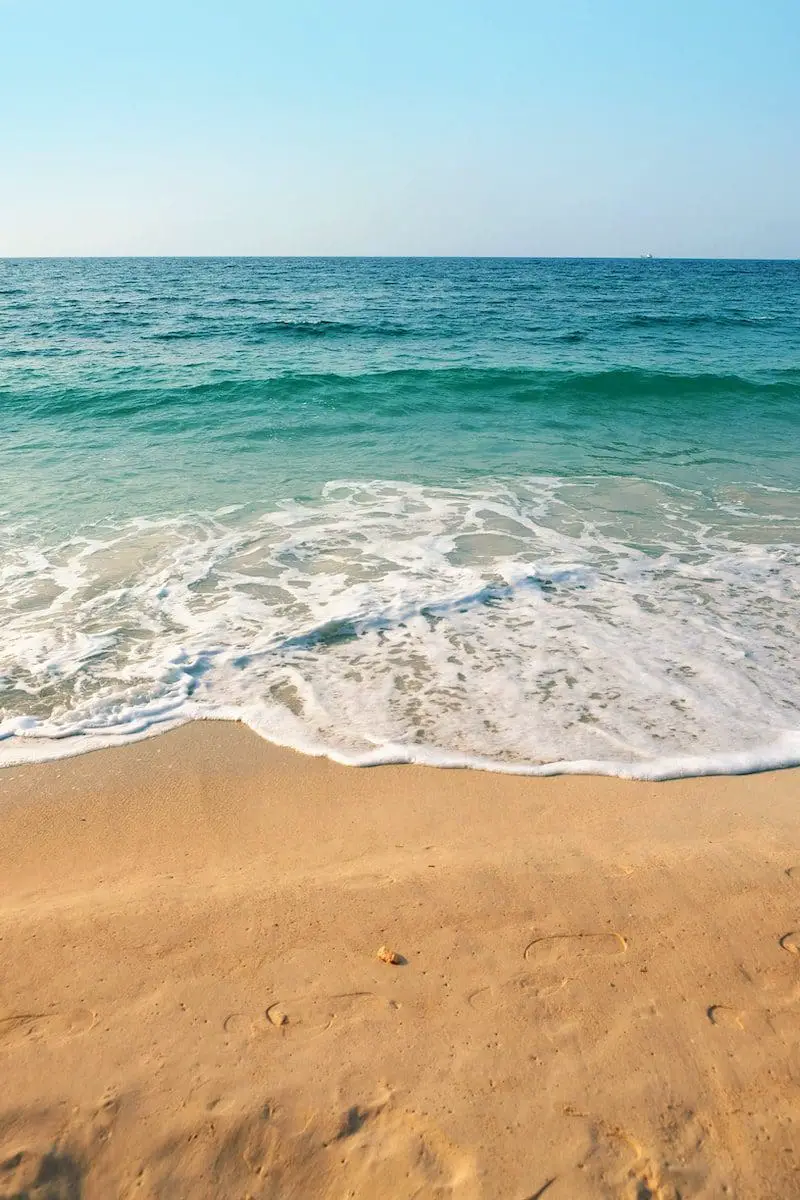Earth’s different forms of water are oceans, seas, gulfs, bays, rivers, ice on mountains, groundwater, etc.
Seawater is a large and shallow body of saltwater that originated from the ocean and is enclosed by land, partially or wholly. It is found near the ground of a country which acts as a connection between sea and land.
The gulf is part of a sea or ocean, mostly surrounded by land. Gulf has a narrow opening that connects a gulf with the sea or ocean.
Key Takeaways
- A sea is a large body of salt water enclosed by land on all sides, whereas a gulf is a portion of the sea partially enclosed by land.
- Seas are larger than gulfs and are divided into smaller bodies of water by continental shelves. In contrast, gulfs have a narrower entrance than a bay and are surrounded by a larger landmass.
- Seas are important for international trade, fishing, and tourism, while gulfs are used for naval bases, oil exploration, and recreational boating.
Sea vs Gulf
Sea is a larger body of saltwater, and the gulf is a more petite body of saltwater, both originating from the ocean. Humans use the sea and gulf in different forms, as the sea can be used for industrial purposes while the gulf can be used for a harbour.

The sea is a shallow saltwater body somehow fragmented from the enormous ocean by many lands such as an island. It can also be engulfed in continental basins and isolated from the ocean. Sea is found on the ocean’s edge and partially enclosed by land.
A gulf is defined as a body of water enclosed by land connecting it to a larger body of water, such as an ocean or sea. It is part of a sea that profoundly penetrates the ground and is surrounded by land. It has a narrow opening and looks like a deep sea inlet.
Comparison Table
| Parameters of Comparison | Sea | Gulf |
|---|---|---|
| Area | More extensive than a gulf. | More minor in area, it is a part of the sea or ocean. |
| Connection | The sea can be landlocked or connected by a strait to a larger body of water, the ocean. | It is always connected to a larger body of water by a strait. |
| Formation | The sea can be formed when the sea level rises, causing shallow regions of continental crust to be flooded. | The gulf is formed when tectonic activity creates continental basins on the margin of oceans, seas, or large water bodies that become flooded with water when the sea or water level rises. |
| Geology | The sea contains sediments from the river delta, like sand, silt, and mud. They are lithified into rocks. | Gulf can contain large deposits of carbonate, or if there are deposits of sand, silt, and mud, they take the shape of a fan. |
| Largest Area | Philippine sea with an area of 5.695 million km^2. | The Gulf of Mexico with an area of 1.554 million km^2. |
| Examples | Philippine sea, Red sea, south china sea, Weddell sea, Arabian sea, Coral sea, Caribbean sea, Mediterranean sea, | The Gulf of Mexico, the Gulf of Oman, the Gulf of Aden, the Persian Gulf, the Gulf of Bothnia, etc. |
What is Sea?
The sea is the saltwater body parted from the ocean, sometimes enclosed by land. A sea is smaller than an ocean and is located where the land and ocean meet.
The sea contains sand, silt, and mud deposits derived from rivers emptying through deltas. Sediments are made of silicate minerals such as quartz and mica. They become lithified into rocks such as sandstone and mudstone.
The sea plays a critical role in climate moderation, water, carbon, and nitrogen cycle on Earth. Due to the abundance of sodium chloride in the seawater, humans are extracting salt.

What is Gulf?
At various locations throughout a sea, many zones surrounded by land surface and having a slender opening are present. These zones are called the gulf.
The gulf is connected to the ocean and is more enclosed by landmass. The gulf is used for harbouring and trading because of its semicircular shape.
The Gulf of Mexico is the world’s most enormous gulf at the borders of the United States, Mexico, and the island nation of Cuba. Its coastline is about 5,000 km. Gulfs are named after the cities or countries they are surrounded by, there are many gulfs, but few are very popular.

Main Differences Between Sea and Gulf
- The sea is part of the ocean, enclosed by land in some features, but the gulf is surrounded by land with a narrow opening to the sea or ocean.
- Sea makes up the more significant part of the water body on the Earth, while the gulf makes up a minor part compared to the sea as it is present near the country’s coastline.
- The sea can contain abundant deposits of sand, silt, and mud derived from rivers that empty into the sea through deltas, predominantly silicate minerals. At the same time, the gulf can contain sand, silt, and mud sediments, which can become a submarine fan.
- Humans can use the sea for trade, travel, power generation, etc., while the gulf can be mainly for harbouring ships, fishing, and export and import purposes.
- An example of the immense sea is the Philippine sea covering an area of about 5.7 million km^2, while the largest gulf is the Gulf of Mexico, with an area of about 1.6 million km^2.






